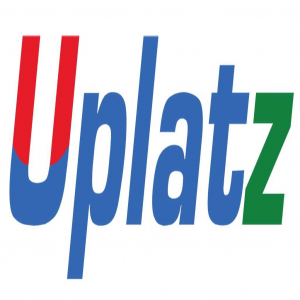HP-UX System Administration

This Hewlett Packard HP-UX System Administration training course is designed to give delegates practical experience in the administration of an HP-UX UNIX System. Reference will be made to the HP-UX command line, including using the System Management Homepage (SMH) to achieve the course exercises and objectives.
The delegate will learn and acquire skills as follows:
- HP-UX Server Range
- Managing Users and Groups
- Navigating the HP-UX File System
- System Management Homepage
- Booting PA-RISC and INTEGRITY Systems and Shutdown
- Logical Volume Manager
- File System Management
- Managing Swap Space
- Maintaining Logical Volumes and File Systems
- Preparing for Disasters
- Accessing the System Console and the iLO-MP
- HP-UX Kernel Configuration
- Configuring Device Special Files (DSF)
- Managing Software with SD-UX
- Managing Patches with SD-UX
- Ignite-UX
The HP-UX System Administration course is designed for System Administrators and Programmers and other Technical IT staff who require a working knowledge of the key tasks required to administer an HP-UX system.
The course assumes knowledge of the HP-UX Operating System to the level covered in the HP-UX Introduction Course. Some shell programming experience may also prove advantageous; this can be gained on the HP-UX Shell Programming Course.
On completion of the HP-UX System Administration course the delegate will have a greater awareness, both technical and practical, of the key tasks required to administer an HP-UX system, and completing these tasks by interacting via the command line or the System Management Homepage (SMH).
This course, together with the HP-UX Fundamentals course, covers some of the topics required for the HP-UX 11i v3 System Administration (HP0-P20) exam.
Before taking any exam, ensure you have the recommended experience. The HP-UX website lists all exam requirements and these are updated regularly.
Exams are not included as part of the course.
This HP-UX System Administration course assumes good knowledge of a Unix operating system in an Enterprise environment to the level covered in the HP-UX Introduction course. Alternatively, relevant experience of UNIX or Linux servers is required, preferably within an Enterprise environment.
Knowledge of HP-UX Shell Programming to the level covered on the HP-UX Shell Programming course would also be beneficial.
- HP-UX Introduction
- HP-UX Advanced Shell Programming Tools
- Oracle SQL
- TCP/IP Networking
- Apache Web Server
- Course technical content is subject to change without notice.
- Course content is structured as sessions, this does not strictly map to course timings. Concepts, content and practicals often span sessions.
HP-UX System Administration
Course Contents - DAY 1
Course Introduction
- Administration and Course Materials
- Course Structure and Agenda
- Delegate and Trainer Introductions
Session 1: THE HP SERVER RANGE
- HP Integrity Series Servers
- HP Integrity Entry-Class Servers
- HP Integrity Mid Range Servers
- HP Integrity Superdome Servers
- HP 9000 Series Servers
- HP 9000 Superdome
- HP Servers RP8420-32
- HP 9000 RP4440 Server
- Node Partitioning Support
Session 2: MANAGING USERS AND GROUPS
- Managing Users
- The /etc/passwd File
- Adding an Entry to the /etc/passwd File
- The /etc/shadow File
- The pwconv and pwunconv Commands
- The /etc/group File
- Adding an Entry to the /etc/group File
- Managing User Accounts
- The useradd Command
- The usermod Command
- The userdel command
- Deactivating and Reactivating a User Account
- User Group Maintenance
- Managing Groups
- Password Ageing and Password Security Policies
- The passwd command
Session 3: NAVIGATING THE HP-UX FILE SYSTEM
- Unix File System Hierarchy
- Static and Dynamic Files
- HP-UX System Directories
- Searching for Files and Executables
Session 4: SYSTEM MANAGEMENT HOMEPAGE (SMH)
- SMH Introduction
- Starting SMH
- SMH Login Screen
- Navigating the SMH Software
- SMH Command Line Interface Configuration
- Text Based SMH
Course Contents - DAY 2
Session 5: BOOTING PA-RISC AND INTEGRITY SYSTEMS AND SHUTDOWN
- System Startup Process for an HP PA-RISC Server
- ISL (Initial System Loader) & Autoboot
- Enabling and Disabling Autoboot
- Manually Booting HP-UX in Single User-Mode
- Recovering from a Lost root Password
- Booting to LVM Maintenance State
- Booting from an Alternate Kernel
- Understanding Hardware Addresses
- Booting from Another Disk
- HP Integrity Server Booting Differences
- The init Procedure
- System Run States
- Using Unique Keywords
- System Startup Procedures
- The rc Process
- Sequencer Directories
- Kill Scripts
- Execution Scripts
- Contents of the Template File
- Configuration Files
- Changing the /etc/inittab File
- Shutdown and rc
- Shutdown Permissions
- The reboot Command
Session 6: LOGICAL VOLUME MANAGER (LVM)
- Disk/File System Configuration
- Logical Volume Manager
- LVM Version 1 Limits
- LVM Version 1, 2.0 And 2.1 Comparison Table
- LVM DSF Directories
- Benefits of Persistent DFS Naming
- Creating Physical Volumes
- Displaying Physical Volumes
- Creation of Volume Groups
- Creating a 1.0 Volume Group
- Creating a 2.x Volume Group
- Displaying Volume Groups
- Creating Logical Volumes
- Displaying Logical Volumes
- An Introduction to Mirroring and Disk Striping
- Quorum
- Glossary of Common HP LVM Commands
Course Contents - DAY 3
Session 7: FILE SYSTEM MANAGEMENT
- File System Structure
- File Systems Types
- Creating File Systems
- Special newfs Arguments
- Blocks and Fragments
- Mounting File systems
- Checking the File System Table
- Using the /etc/fstab File
- Unmounting File Systems
- Mounting and Unmounting CDFS File Systems
- Mounting and Unmounting LOFS File Systems
- Mounting a ISO Image
- How To Mount a MemFS File System
Session 8: MANAGING SWAP SPACE
- HP-UX Memory Concepts
- HP-UX Swap Concepts
- HP-UX Swap Types
- HP-UX Pseudo Swap
- Creating Swap via the CLI
- Enabling Swap via /etc/fstab
Session 9: MAINTAINING LOGICAL VOLUMES AND FILE SYSTEMS
- Defragmenting File Systems
- Repairing Corrupted File Systems
- The lost+found Directory
- Repairing a Damaged HFS File System
- Repairing a Damaged VXFS File System
- Repairing a Damaged Root File System
- Common Errors Found by fsck
- Monitoring Free Space
- Extending a Volume Group
- Reducing a Volume Group
- Removing a Volume Group
- Extending a Logical Volume
- Reducing a Logical Volume
- Removing a Logical Volume
- Extending a File System
- Reducing a File System
Course Contents - DAY 4
Session 10: PREPARING FOR DISASTERS
- Dynamic Root Disk
- DRD Commands Overview
- Downloading And Installing Dynamic Root Disk
- Cloning the Active System Image
- Verifying a DRD Clone's Status
- Synchronizing a DRD Clone
- DRD Sync Preview Command
- Copying the Files To the Inactive Clone Image
- DRD Sync System Shutdown Script
- DRD-Safe Commands And Packages
- Mounting/Unmounting the Inactive System Image
- Performing Tasks on the Inactive System Image
- Activating/Deactivating the Inactive System Image
- Cloning (Golden image) / Backing up the Root Disk
Session 11: ACCESSING THE SYSTEM CONSOLE AND THE ILO/MP
- Introduction to iLO 2
- Ports and LEDs
- HP Integrity Server Blade Components
- HP Integrity rx2660 Server Components
- HP Integrity rx3600 and rx6600 Server Components
- iLO 2 MP Status LEDs
- iLO 2 MP Reset Button
- Resetting Local User Accounts To Default Values
- Getting Connected to iLO 2
- Logging In to iLO 2
- Accessing the Host (Operating System) Console
- Accessing a Text Host Console Using the TUI
- Using iLO 2
- iLO 2 TUI Command Menu
- iLO 2 Web GUI
Session 12: HP-UX KERNEL CONFIGURATION
- Kernel Configuration Interfaces
- Kernel Management Commands
- Tuneable Manual Pages
- Managing Kernel Configurations Using Kcweb
- The Web Based Interface Of Kcweb
- Managing Saved Configurations
- The Kernel System File
- Managing The System File
- Managing Modules Via The System File
- Managing Tunables Via The System File
- Applying System File Changes
- Booting Using A Non-Default Configuration
Session 13: CONFIGURING DEVICE SPECIAL FILES (DSF)
- Legacy and Agile Naming Models SD-UX Structure
- Agile View
- Persistent Device Special File (DSF) Naming Scheme
- Disk Device File Naming Convention
- Tape Device Special File Naming Convention
- Array Controller and Other Device File Naming
- Legacy DSF's
- Legacy View Major And Minor Numbers
- Agile and Views in ioscan
- Mapping Between Legacy DSF's and Persistent DSF's
- Creating Device Special Files Manually
- Removing DFS's
Course Contents - DAY 5
Session 14: MANAGING SOFTWARE WITH SD-UX
- Software Distribution Overview
- SD-UX Structure
- SD-UX Commands
- SD-UX Daemons
- Glossary of Terms
- The Installed Produce Database (IDP)
- Using SD Commands
- Listing Installed Software
- Managing Software Depots
- Installing Software
- Verifying Installed Software
- Removing Installed Software
Session 15: MANAGING PATCHES WITH SD-UX
- Managing Patches
- Patch Naming Conventions
- Listing Installed Patches
- Patch State
- Acquiring Individual Patches
- Installing Individual Patches
- Installing Patches from CD/DVD
- Installing Patches from Tape
- Verifying a Patch
- Rolling Back a Patch
- Committing a Patch
- The Patch Assessment Tool
- The Security Patch Tool
- The HP-UX Software Assistant (SWA)
Session 16: INSTALLING THE OS WITH IGNITE-UX
- System Recovery Using Ignite-UX
- Setting up an Ignite-UX Server
- Ignite-UX Software Requirements
- Installing Ignite-UX Software on the Server
- Creating the HP-UX Depot
- Creating the HP-UX OE Configuration Information
- Configure the System as an Ignite-UX Server
- Cold-installing a Client Across the Network
- Boot the Client System from the Ignite-UX Server
- Installing HP-UX Using the Client Console
- Creating a Golden Image
Session 17: WORKSHOP EXERCISES
- HP-UX 11 System Administration Course Workshops
Session 18: WORKSHOP SOLUTIONS
- HP-UX 11 System Administration Course Workshops Solutions
Addendum: Reference Materials (provided within the course handbook for additional reading)
- Appendix 1 - Node and Virtual Partitioning
- Appendix 2 - The Veritas Volume Manager
- Appendix 3 - File & File System Backup and Restore








